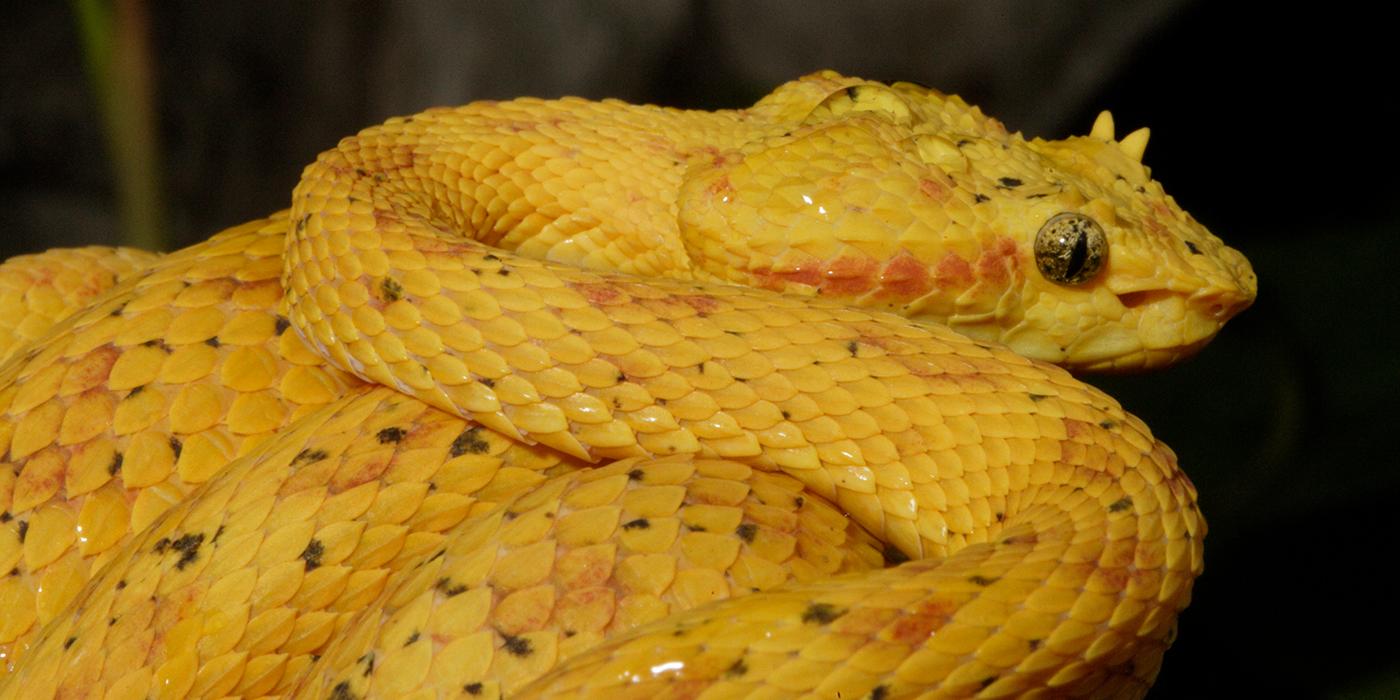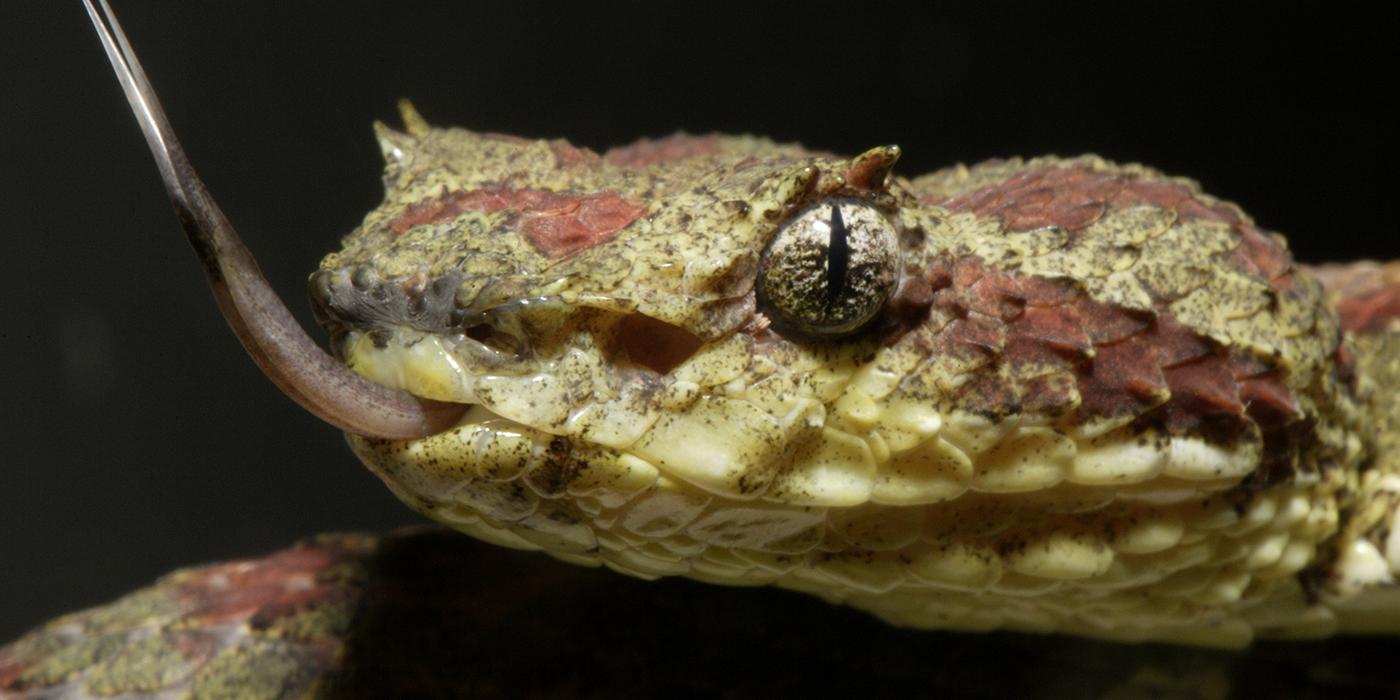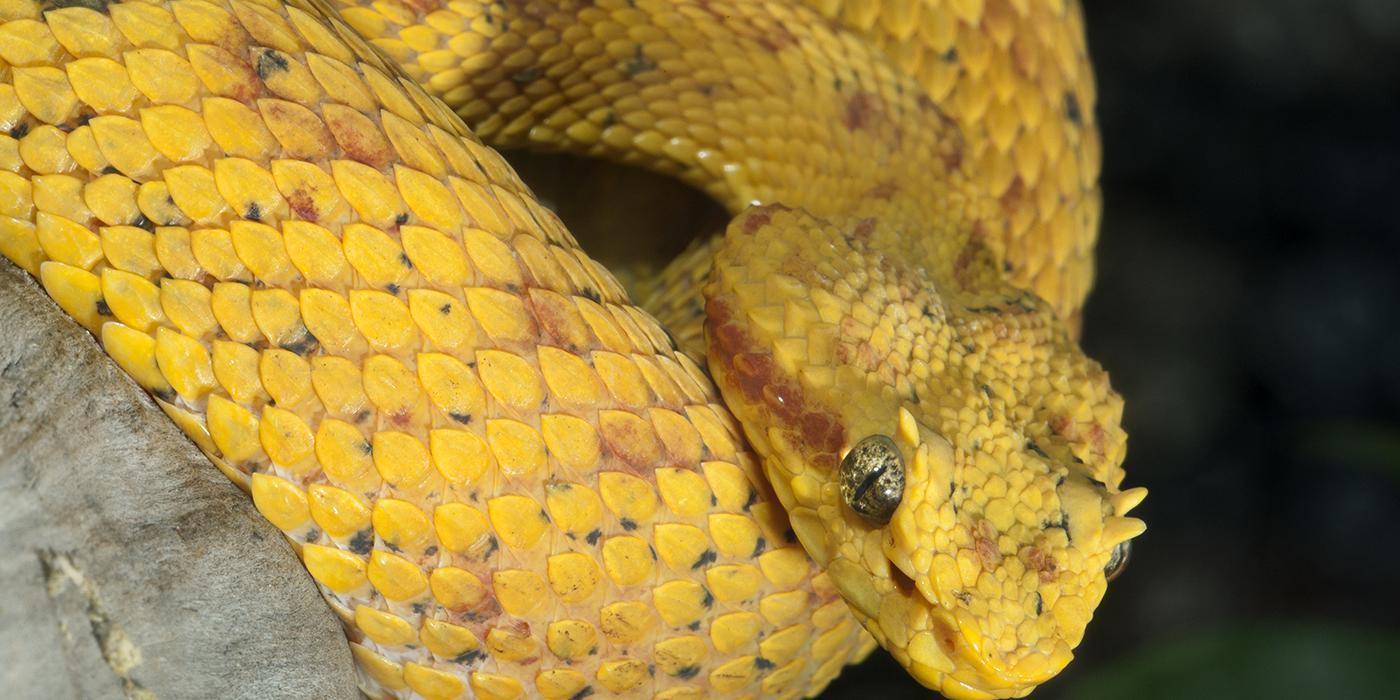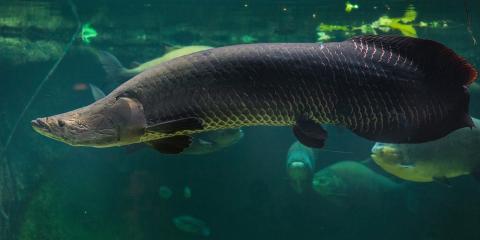Physical Description
The eyelash palm pitviper is named for the bristly scales above its eyes. It looks like it has a hood or eyelashes over its eyes. It can be easily recognized by its color and triangular head. They may be yellow, green or pinkish depending on where they come from.
Their scales are keeled so they are rough and sharp to the touch. Their rough scales may help to protect them against the branches and vines of their arboreal habitat, unlike most snakes whose scales are smooth. They have a pair of heat-sensitive pits between the eyes and nostrils. Its pupils are long vertical slits.
Size
It is one of the smallest venomous snakes in Central America measuring only up to 2.5 feet (76 centimeters) and averaging about 22 to 32 inches (56 to 81 centimeters).
Native Habitat
Eyelash palm pitvipers range from southern Mexico through Central America to Colombia, Ecuador and western Venezuela, though they have inadvertently been sent throughout the world in banana shipments.
Their habitat ranges from densely-wooded, sea-level forests, to streamside vegetation in moist lowlands and foothills to wooded cloud and montane forests. They primarily inhabit shrubbery, vine tangles, low branches of trees and palms.
Lifespan
Longevity in human care exceeds 16 years.
Communication
Vipers use their sense of smell to find mates. The males go through an amazing courtship ritual called the dance of the "adders" when they are competing for the same female. They face each other with the head and the forepart of the body held erect, while trying to push the other to the ground. This can go on for hours. There is no biting from either contestant.
Food/Eating Habits
This viper usually attacks its prey quickly, injects the hemotoxic venom and then waits for the prey to die. They tend to have very long fangs and the bite can be very painful and deadly. In general, they do not bite humans unless teased or trampled.
Adult eyelash palm pitvipers prey upon small mammals, birds (including hovering hummingbirds) and nestlings, lizards and frogs. Juveniles prey primarily on small frogs.
At the Smithsonian's National Zoo, the eyelash palm pitviper eats mice and small rats.
Sleep Habits
The eyelash palm pitviper is mostly nocturnal and is usually found in trees, on the leaves of big plants or other vegetation just above the ground.
Reproduction and Development
Eyelash vipers are ovoviviparous. The female snake retains the fertilized eggs inside her body where each developing baby snake is contained within a fibrous membrane "shell" and nourished by its yolk. When the baby snakes are fully developed, they either hatch out of the egg membrane inside the oviduct or they hatch just after the membranous eggs are laid by the mother. Typically, a clutch of eyelash vipers is six to 12 young, although more than 25 have been reported. Newborns are about 6 to 7 inches (15 to 18 centimeters) long.
Conservation Efforts
They are threatened by large mammals, humans, disturbance of natural habitat, hedgehogs, foxes, badgers, other snakes and fish. They are also preyed upon by large raptors like the laughing falcon.
Help this Species
- If you see a snake in the wild, leave it alone and encourage others to do the same. Don’t assume it is a venomous species, and don’t attack it if it doesn’t pose a threat to your safety. Tell your friends and family about the eco-services that snakes provide, such as keeping rodent populations in check.
- Share the story of this animal with others. Simply raising awareness about this species can contribute to its overall protection.





